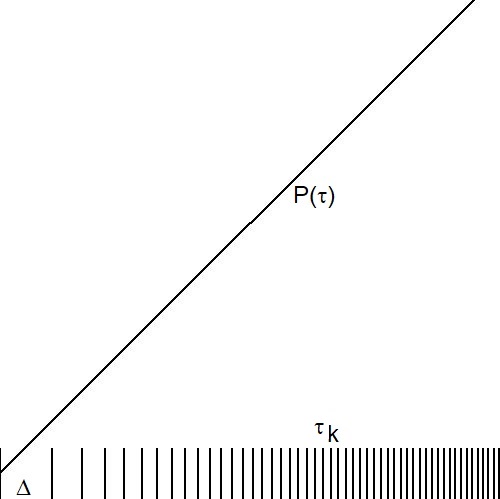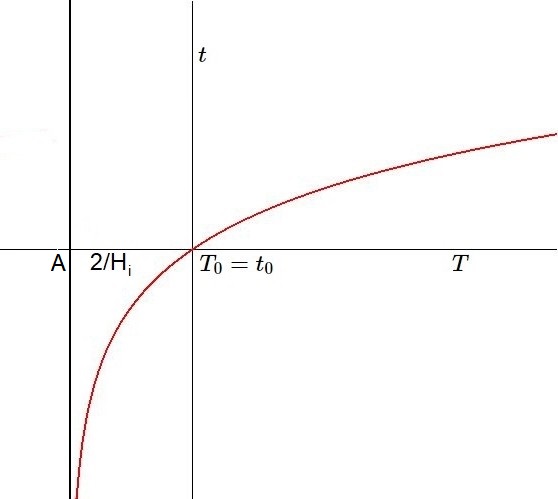
index $ \def \hieruit {\quad \Longrightarrow \quad} \def \met {\quad \mbox{with} \quad} \def \EN {\quad \mbox{and} \quad} \def \SP {\quad ; \quad} \def \half {\frac{1}{2}} $

 | $$ \frac{F}{F_0} = \frac{\Delta T_0}{\Delta T} = \sqrt{\frac{m}{m_0}} = 1+\frac{H_i}{2}(T-T_0) $$ The theory of linear Sensible Densities must be adapted a little bit in order to make physical applications possible (see Dimensions check): $$ P(\tau) = C\tau+D \hieruit \int_{0}^{T_k/\Delta} (C \tau + D ) \, d\tau = \half C \left(\frac{T_k}{\Delta}\right)^2 + D \left(\frac{T_k}{\Delta}\right) = k \\ \frac{T_k}{\Delta} = \sqrt{(D/C)^2 + 2 k/C} - D/C = \sqrt{1/4 + 2 k} - 1/2 = \tau_k \\ \hieruit C=1 \SP D=\frac{1}{2} \SP P(\tau) = \tau + \frac{1}{2} \\ 1+\frac{H_i}{2}(T-T_0) = 2 P\left(\frac{H_i}{4}(T-T_0)\right) $$ |
It follows that for $(T_0-T)=2/H_i=(T_0-A)$ - near the creation timestamp Alpha - the orbital clock frequency becomes zero. This means that the age $(T_0-A)$ cannot be measured exactly with one of our clocks, neither with an orbital one or with an atomic one.
| Let Milne's Formula be the next and the last one to derive. $$ 1+\half H_i (T-T_0) = e^{H_i/2.(t-t_0)} \\ \boxed{ \half H_i(t-t_0) = \ln\left[1+\half H_i (T-T_0)\right] } $$ The old formula can be recovered with $\,(T_0-A) = 2/H_i\,$ or rather $\,\half H_i = 1/(T_0-A)\,$, giving: $$ t-t_0 = (T_0-A)\ln\left[\frac{T_0-A}{T_0-A} + \frac{T-T_0}{T_0-A}\right] = (T_0-A)\ln\left(\frac{T-A}{T_0-A}\right) $$ |  |